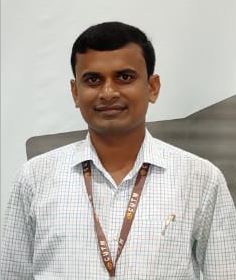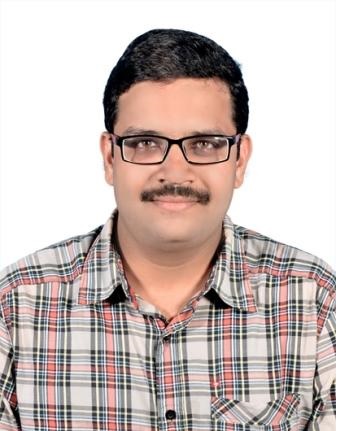Analog Communication Systems
Course Attendees
Still no participant
Course Reviews
Still no reviews
Course Name : Analog Communication Systems
Code(Credit) : CUTM1045 (2-1-0)
Course Objectives
- Impart the basic concepts of analog modulation schemes.
- Describe different types of noise and predict its effect on various analog communication systems.
- Know the techniques of analog communication and noise analysis in analog communication.
Learning Outcomes
Upon successful completion of this course, students should be able to:
- Analyze energy and power spectral density of the signal.
- Develop an understanding of the performance of analog communication systems.
- Calculate bandwidth and power requirements for analog systems.
- Analyze the different characteristics of the receiver.
Course Syllabus
Module I (5 Hours)
Basic block diagram of analog communication. Need for modulation, Fourier transforms, Properties of Fourier transform (Duality property, Frequency shifting property, Modulation property). Introduction to AM: Time-Domain description, Frequency – Domain description,
Generation of AM wave: square law modulator, switching modulator. Detection of AM waves: square law detector, envelop detector.
Practice: (using Hardware and MATLAB)
DSB+C Modulation using Trainer Kit and MATLAB
DSB+C Demodulation using Trainer Kit and MATLAB
Module II (6 Hours)
Double sideband suppressed carrier modulation (DSBSC): Time-Domain description, Frequency-Domain representation, Generation of DSBSC waves: balanced modulator, ring modulator. Coherent detection of DSBSC modulated waves.
SINGLE SIDE-BAND MODULATION (SSB):
Quadrature carrier multiplexing, SSB modulation, Frequency-Domain description of SSB wave, Time-Domain description. Phase discrimination method for generating an SSB modulated wave, Demodulation of SSB waves.
Practice: (using Hardware and MATLAB)
Quadrature Carrier Multiplexing using Trainer Kit and MATLAB.
DSB-SC Modulation and Demodulation using Trainer Kit and MATLAB.
VESTIGIAL SIDE-BAND MODULATION (VSB):
Frequency – Domain description, Generation of VSB modulated wave, Time – Domain description, Frequency division multiplexing, Superheterodyne receiver.
Practice: (using Hardware and MATLAB)
Frequency Division Multiplexing using Trainer Kit and MATLAB.
Module III (5 Hours)
ANGLE MODULATION (FM):
Basic definitions, FM, narrowband FM, wideband FM, the transmission bandwidth of FM waves, Generation of FM waves: indirect FM, and direct FM.
Practice: (using Hardware and MATLAB)
FM Modulation using Trainer Kit and MATLAB
Module IV (4 Hours)
DEMODULATION OF FREQUENCY MODULATED SIGNALS:
Demodulation of FM waves, Phase-locked loop, Non-linear model of the phase-locked loop, Linear model of the phase-locked loop, Nonlinear effects in FM systems.
Practice: (using Hardware and MATLAB)
FM Demodulation using Trainer Kit and MATLAB.
FM Demodulation using PLL.
Module V (4 Hours)
RANDOM PROCESS:
Random variables, Statistical averages: Function of random variables, moments, mean, Correlation, and Covariance function: Principles of the autocorrelation function, cross-correlation functions, Central limit theorem, Properties of Gaussian process.
Practice: (Using MATLAB)
Study of Autocorrelation & Cross-correlation using MATLAB
Module VI (5 Hours)
NOISE: Introduction, shot noise, thermal noise, white noise, Noise equivalent bandwidth, Narrow bandwidth, Noise Figure, Frequency Domain Representation of Noise, Power Spectral Density, Spectral Components of Noise, Response of a Narrowband filter to noise, Effect of a Filter on the Power spectral density of noise, Superposition of Noises, Noise Bandwidth, Narrowband representation of noise and its PSD.
Practice: (using MATLAB)
Generation of Gaussian Noise using MATLAB
Module VII (3 Hours)
NOISE IN CONTINUOUS WAVE MODULATION SYSTEMS:
Introduction, Receiver model, Noise in DSB-SC receivers, Noise in SSB receivers, Noise in AM receivers, Threshold effect, Noise in FM receivers, FM threshold effect, Pre-emphasis and De-emphasis in FM.
Reference
Text Books:
- Communication Systems, Simon Haykins, 5th Edition, John Willey, India Pvt. Ltd, 2009.
- Taub, D. L Schilling, G. Saha, Principles of Communication System, 3rd Edition, 2008, Tata McGraw Hill, India; ISBN: 0070648115. (Selected portions from chapters: 1, 2, 3, 4, 5, 7, 8 and 9).
Reference Books:
- Modern Digital and Analog communication systems B. P. Lathi, Oxford University Press., 4th ed, 2010.
- Communication System Engineering, Second Edition by MasoudSalehi, John G. Proakis, ISBN: 0130950076.
- Principles of Electronic communication Systems, Louis E. Frenzel,3rd Edition, Tata McGraw Hill.
- Communication Systems: Analog and digital, Singh and Sapre, TMH, 2nd Ed, 2007.
Session Plan
Session 1
Basic block diagram of analog communication, information source, source transducer, transmitter, channel, receiver. Need for modulation.
https://www.youtube.com/watch?v=KT3yNuY_FPM&feature=youtu.be
Session 2
Fourier Transforms properties: duality property, frequency shifting property, modulation property.
https://www.youtube.com/watch?v=MSVazG341T8
Session 3
Introduction to AM (Time Domain & Frequency Domain Description)
https://www.youtube.com/watch?v=KT3yNuY_FPM&feature=youtu.be
Session 4
Generation of AM wave: Square Law Modulator, Switching Modulator.
https://www.youtube.com/watch?v=D65KXwfDs3s
Lab Practice
AM(DSB+C) Modulation using MATLAB and Trainer Kit
http://vlab.amrita.edu/index.php?sub=59&brch=163&sim=260&cnt=2644
Session 5
Detection of AM waves: square law detector, envelop detector.
Study of DSB+C demodulation using Envelope Detector using trainer kit.
https://www.youtube.com/watch?v=e_gTCU2fnD8&feature=youtu.be
http://vlab.amrita.edu/index.php?sub=59&brch=163&sim=259&cnt=358
Session 6
Double sideband suppressed carrier modulation (DSBSC): Time-Domain description, Frequency-Domain representation.
https://www.youtube.com/watch?v=6028j9VLlXA&feature=youtu.be
Lab Practice
To Study Generation of DSB-SC signal using trainer kit and MATLAB.
Session 7
Generation of DSBSC waves: balanced modulator, ring modulator.
https://www.youtube.com/watch?v=bw7l2i2-GLs&list=PLXnsjPD8-xuvuHKopadw0omnXZXKFTXkx&index=13
https://www.youtube.com/watch?v=HJ9dj8I3mBw&list=PLXnsjPD8-xuvuHKopadw0omnXZXKFTXkx&index=18
Session 8
Coherent detection of DSBSC modulated waves.
https://www.youtube.com/watch?v=QKle2j4CaNM&feature=youtu.be
Lab Practice
Study of coherent detection of DSB-SC using trainer kit.
Session 9
Quadrature carrier Multiplexing.
https://www.youtube.com/watch?v=zy4DlBYjnFM&list=PLb2wGSuEdRG8lKGO4q7NXE6QDWISAsBkZ&index=34
ACS_ Quadrature Amplitude Modulation
Using MATLAB to study the Quadrature Schemes.
Session 10
Single side-band modulation, Frequency-Domain description of SSB wave, Time-Domain description.
Lab Practice
Generation of SSB using trainer kit and MATLAB.
https://www.youtube.com/watch?v=yv11bJN0Y3w&list=PLb2wGSuEdRG8lKGO4q7NXE6QDWISAsBkZ&index=28
Session 11
Phase discrimination method for generating an SSB modulated wave & Demodulation of SSB waves.
https://www.youtube.com/watch?v=yv11bJN0Y3w&list=PLb2wGSuEdRG8lKGO4q7NXE6QDWISAsBkZ&index=28
Session 12
Frequency – Domain description, Generation of VSB modulated wave, Time – Domain description, Superheterodyne Receiver
Session 13
Frequency Division Multiplexing(FDM).
https://www.youtube.com/watch?v=DXmZpMizzvo&list=PLXnsjPD8-xuvuHKopadw0omnXZXKFTXkx&index=4
Lab Practice
Simulink model design and study of FDM using MATLAB.
Session 14
Basic definitions, Frequency Modulation (FM).
Session 15
Narrowband FM, Wideband FM, The transmission bandwidth of FM waves.
https://www.youtube.com/watch?v=ZyiHw6z2weY
Session 16
Direct Method of FM Generation.
https://www.youtube.com/watch?v=qHd5eLD01zo
Lab Practice
Generation of FM Signal using trainer kit and MATLAB.
Session 17
Indirect Method of FM Generation (Armstrong Method)
Session 19
A nonlinear model of the phase-locked loop, Linear model of the phase-locked loop, Nonlinear effects in FM systems.
Session 20
Lab Practice
FM Demodulation using Trainer Kit and MATLAB.
http://vlab.amrita.edu/index.php?sub=59&brch=163&sim=261&cnt=474
Session 21
Lab Practice
Study of FM demodulation using PLL
Session 22
Mathematical Definition of Random Process, Stationary Process.
Session 24
Statistical averages: Function of Random variables, moments, Mean, Mean Square value, Variance, Standard deviation.
https://www.youtube.com/watch?v=DblXnXxUQc0&list=PLqbmqXmlagen6h-1MUF-gkhKIi-QEuHiu
Session 25
Correlation and Covariance function: Principles of the autocorrelation function, cross-correlation functions. Central limit theorem.
https://www.youtube.com/watch?v=JyZc2JXEn5g
Lab Practice
Study of autocorrelation and cross-correlation using MATLAB.
Session 26
Introduction, shot noise, thermal noise, white noise, Noise equivalent bandwidth, Narrow bandwidth.
Session 27
Noise Figure.
Lab Practice
Study of Gaussian noise using MATLAB.
Session 28
Frequency Domain Representation of Noise, Power Spectral Density, Spectral Components of Noise.
Session 29
The response of a narrowband filter to noise, the effect of a filter on the power spectral density of noise.
Session 30
Superposition of noises, Noise Bandwidth, Narrowband representation of noise, and its PSD.
Session 31
Introduction of receiver model. The figure of merit (FOM) of a receiver.
Session 32
Noise in DSB-SC receivers. Noise in SSB receivers.
Session 33
Noise in AM receivers, Threshold effect. Pre-emphasis and De-emphasis in FM.
Our Main Teachers

I received my M. Tech degree in 2015 from IIT, Kharagpur and PhD degree from Deakin University, Australia in 2021. Now, I am working as a Professor and HOD in the Departmentof Electronics and Communication Engineering, SoET, Bhubaneswar campus, CUTM. Research Interests: Wireless Energy Harvesting System. Metamaterial Study. Printed Microstrip Antenna Design. Transceiver […]

Prabhat K. Patnaik
Asst. Professor in School of Engineering and Technology Department of ECE
VIEW PROFILEPrabhat K. Patnaik received a M.Tech. from Berhampur University in 2012 and B.Tech from Biju Patnaik University of Technology and Management in 2007.Presently he is working as Asst. Professor in Electronics and Communication Engineering Department at Centurion University of Technology and Management, Odisha, India. He has published 10 research articles. His current research includes digital […]

